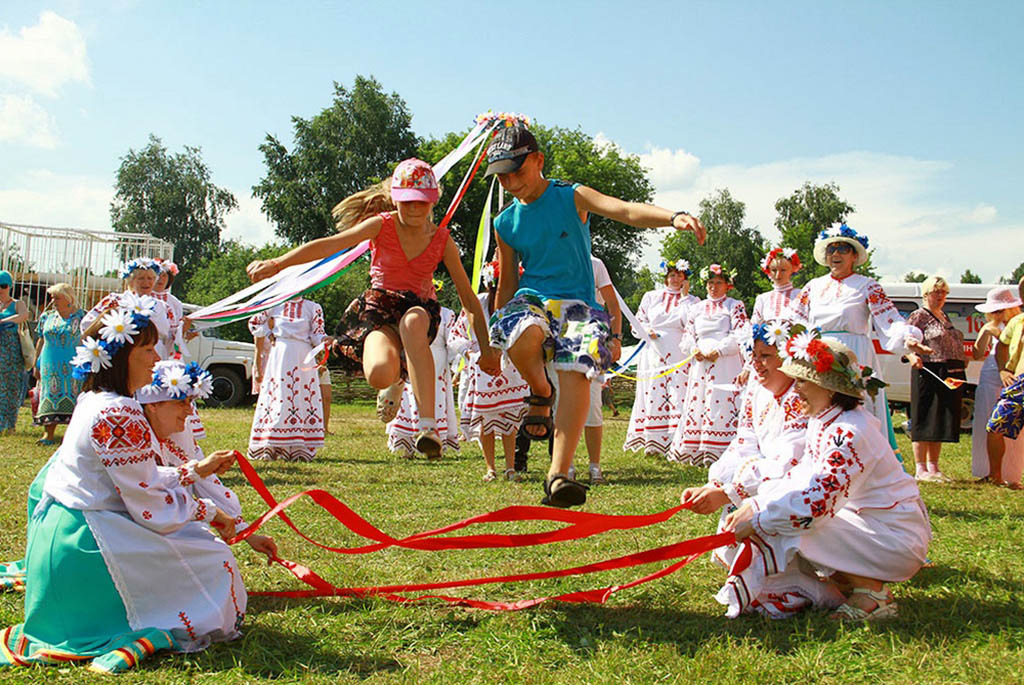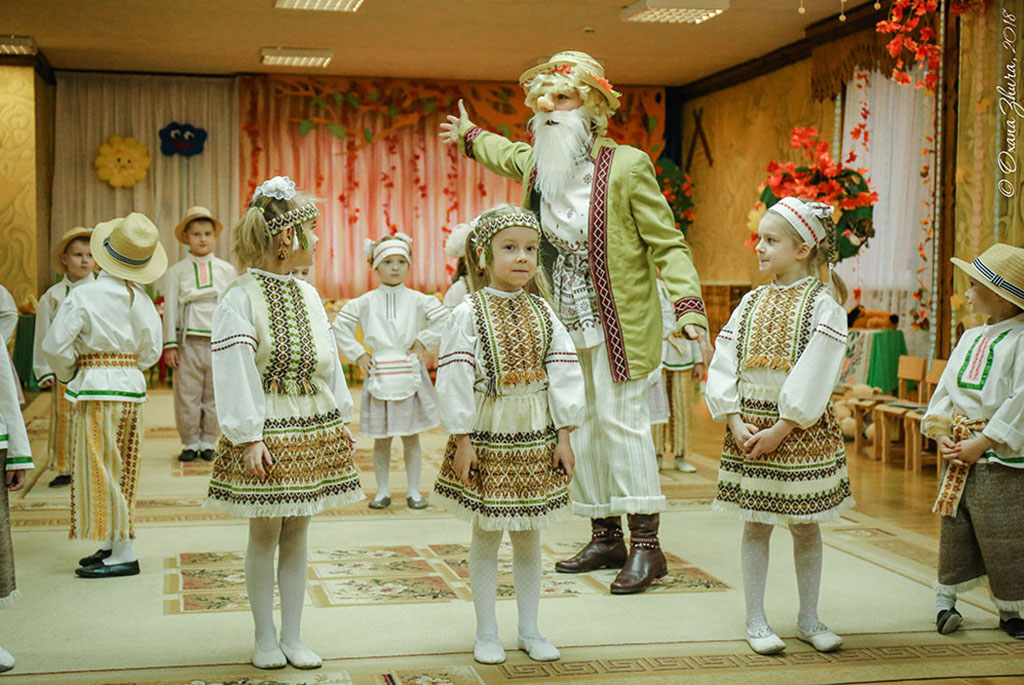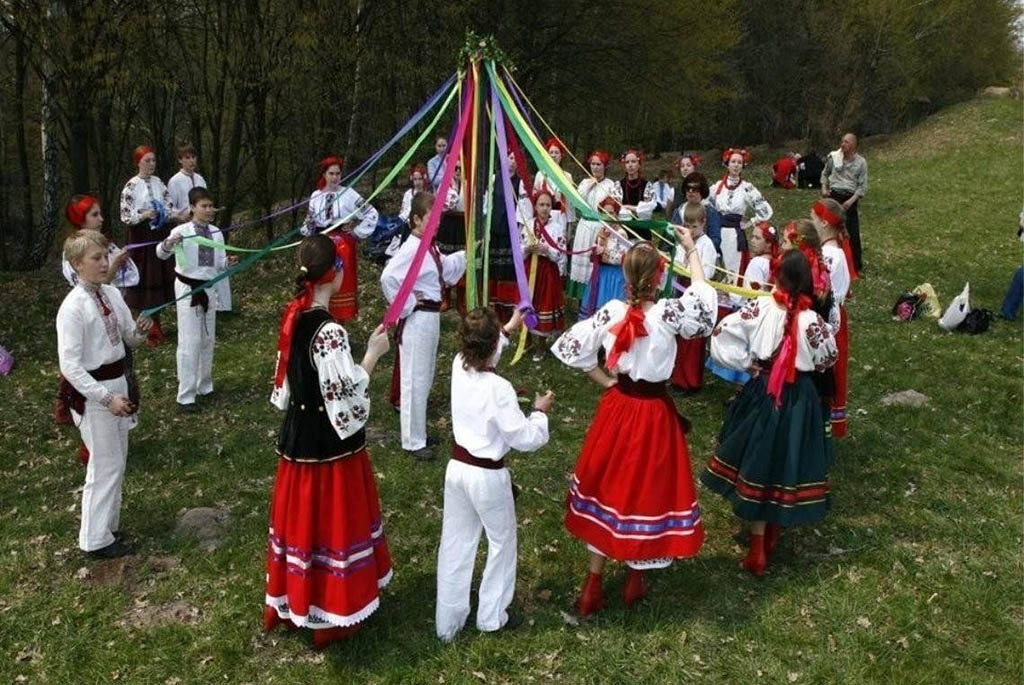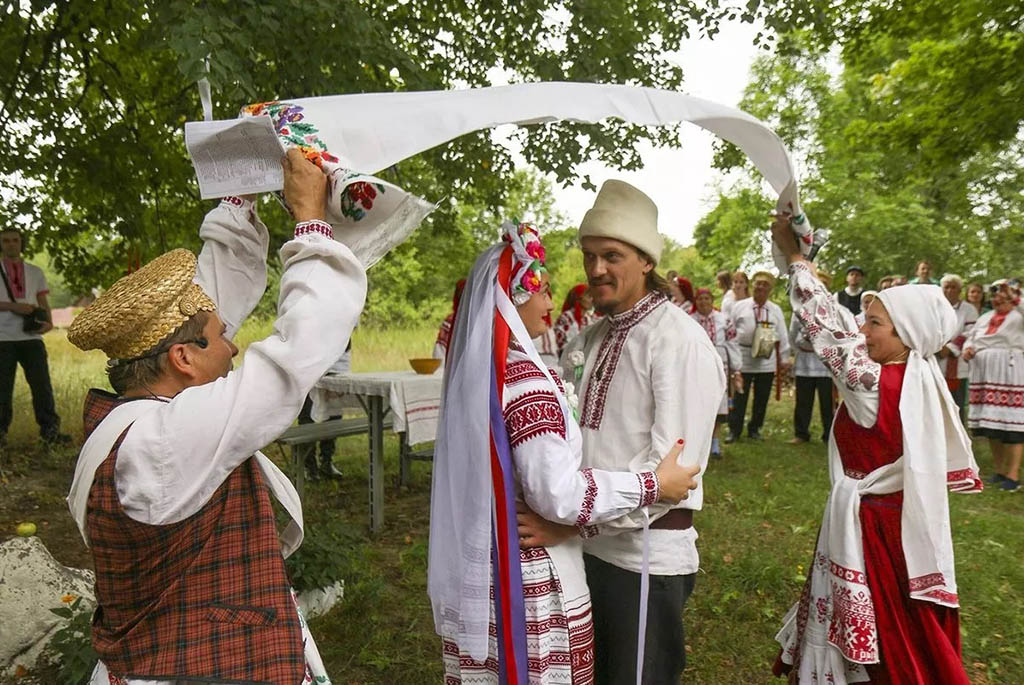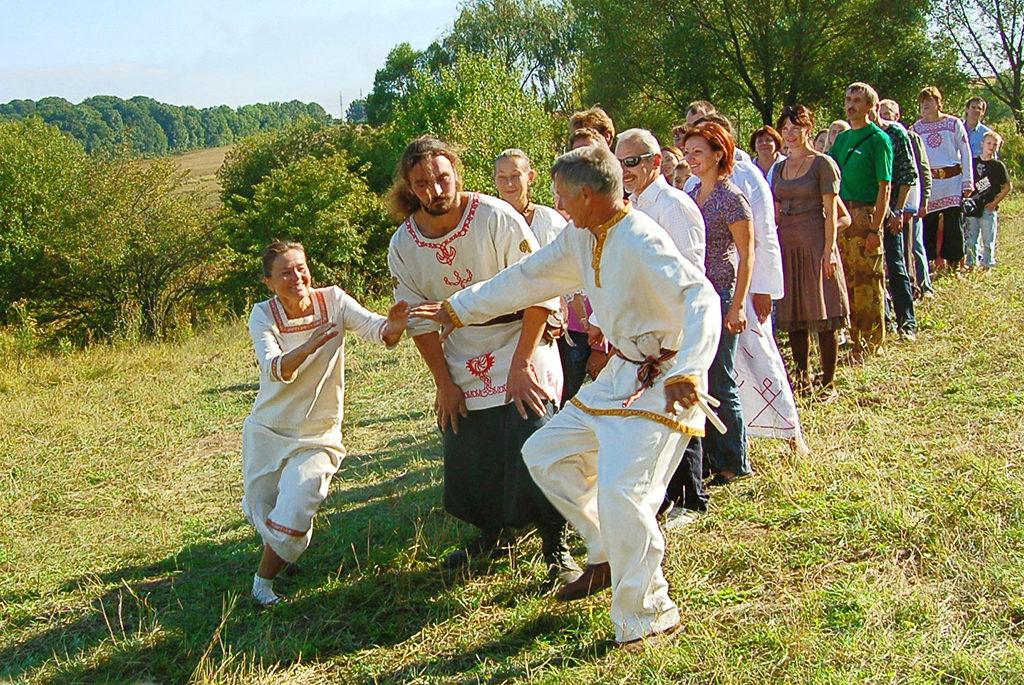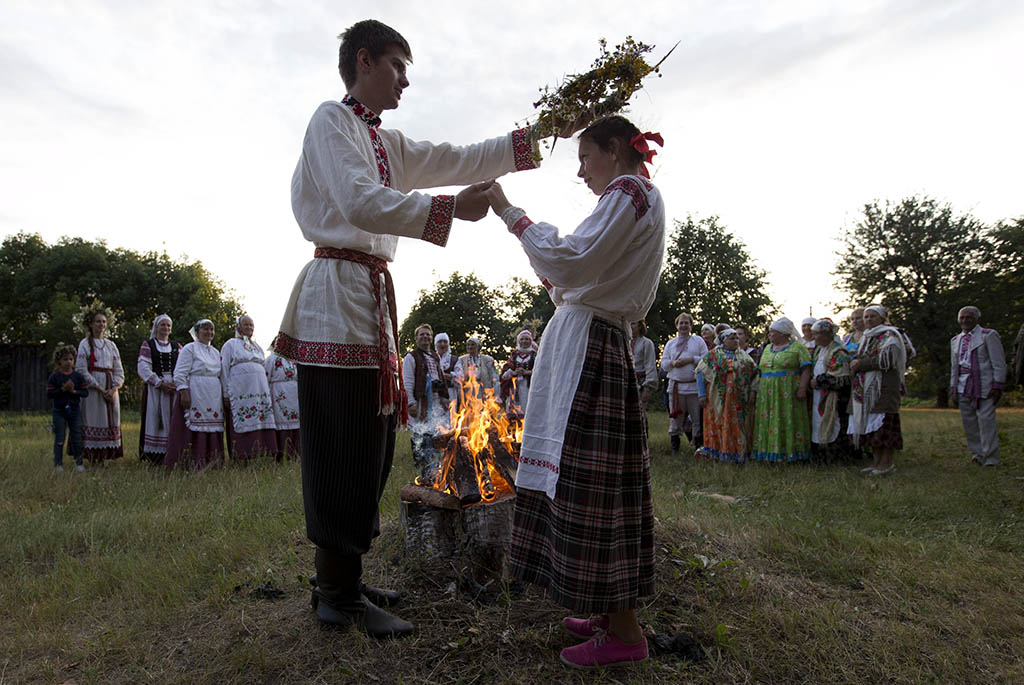These games reflect the soul and character of each nation. They were an integral element of traditional holidays, family gatherings, and just village gatherings. Let's talk about some popular Belarusian folk games that have survived to our days.
"Tereshka's Wedding"
A youth game in which young people took on the roles of married people. "Tereshka's Wedding" was mainly played during Kolyada (a traditional Slavic winter festival). For the game, an improvised wedding table was set up, and a "matchmaker" was chosen, who lined up girls and boys in two rows. Then, to the music, the matchmaker chose a boy and led him to a girl. If the girl liked the selected "groom," they danced, if not, she ran away to return to the row, and the boy tried to catch her. The game was always accompanied by songs and dances.
"Yashchur"
Yashchur is a serpent-like pagan deity worshiped by ancient Belarusians. According to beliefs, he commanded rivers, lakes, and swamps. A boy was chosen to be Yashchur. He wore an inside-out coat, covered his head with a scarf, and sat on a log. Girls in wreaths circled around Yashchur, and he gradually approached each of them and took the wreaths for himself. Then the girls "redeemed" their wreaths from Yashchur. In exchange, they had to do what he said - dance, sing, give Yashchur a kiss. If "Yashchur" was played in winter, the girls wore scarves on their heads instead of wreaths.
"The Goat"
Another Kolyada game. Around a person chosen to be the goat, a circle dance was led, saying the words: "The goat went, our goat, and through the spruce forest, invited everyone to an evening gathering." On the last words, the "goat" approached one of the participants and said he was inviting them. The chosen person stood behind the leader, and the game participants counted to three. Then both participants turned 180 degrees, and now the last one becomes the "goat," while the former "goat" held onto the belt of the new one and walked behind him inside the circle to the songs of the participants. The new "goat" chose a replacement, and the game continued.
"Bayary"
Boys and girls lined up in rows facing each other. The girls were "princesses," and the boys were "boyars." Holding hands, they took turns approaching each other with the words:
- Princess, good evening!
- Boyars, cheers!
- Princess, let me into the city!
- Boyars, why go to the city?
- Princess, to court the maidens!
- Boyars, the girls are too young!
- Princess, they have grown up!
- Boyars, they haven't woven towels!
- Princess, they are already in tubes (referring to the traditional headdress)!
- Boyars, which one?
Then one of the young men approached the girl he liked, saying, "And I liked the one who..." – the boy would then invent the end of the phrase himself. If the "princess" reciprocated the boy's interest, he led her to the "boyars"; if not, the young man tried to humorously force her into his row.
"Tsatsyerka"
Boys and girls split into two columns, holding hands and raising them to form "gates" between the columns. The girl from the first pair ran away from the young man along the inner path, and he chased her along the outer circle. If the girl was caught, the boy kissed her, and she went to the end of the female column. If she managed to escape, the boy returned to his place and chased the next girl. The entire game was accompanied by a traditional song about "tsatsyerka."
"Shulyak"
Shulyak is a fun game played by both children and adults. Participants lined up in a column, holding tightly to the belt of the person in front. The first person in the row was the defender – the "head." The person chosen as "Shulyak" squatted in front of the column and talked with the "head":
- Shulyak, Shulyak, what are you doing?
- Digging a hole.
- Why do you need a hole?
- To make a fire pit.
- Why do you need a fire pit?
- To roast meat.
- Why do you need meat?
- To feed the children.
- Where will you get the meat?
- From behind your back.
- I won't give it!
- I'll take it!
- I want meat!
- Eat a frog on a stick.
After the last phrase, the "Shulyak" jumped up and tried to catch the last person in the column. The "head" tried to prevent this. If the "Shulyak" won, he became the last in the row, and the role of Shulyak passed to the "head," and the game started over
Folk games are not just entertainment but a bridge between the past and the present. That's why Belarusians carefully preserve their national gaming traditions. Participation in folk games is possible at festivals of folk and medieval culture, at celebrations dedicated to the folk calendar – Kupala Night, Maslenitsa, Kolyada. You can also become a participant in these games and learn more about Belarusian traditional amusements during animated tours of ethnographic complexes and museums.
